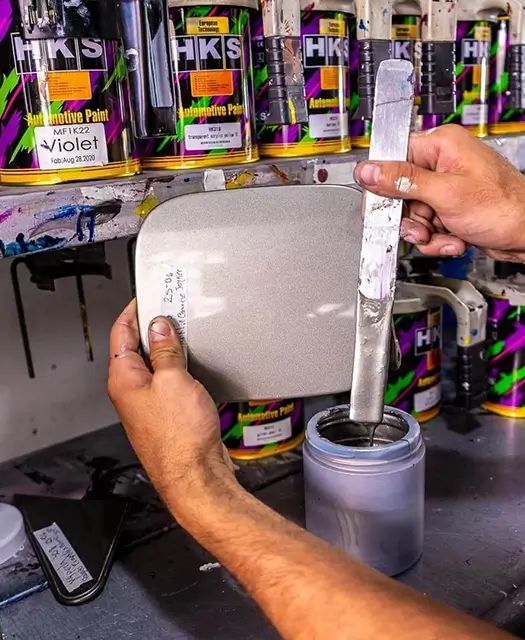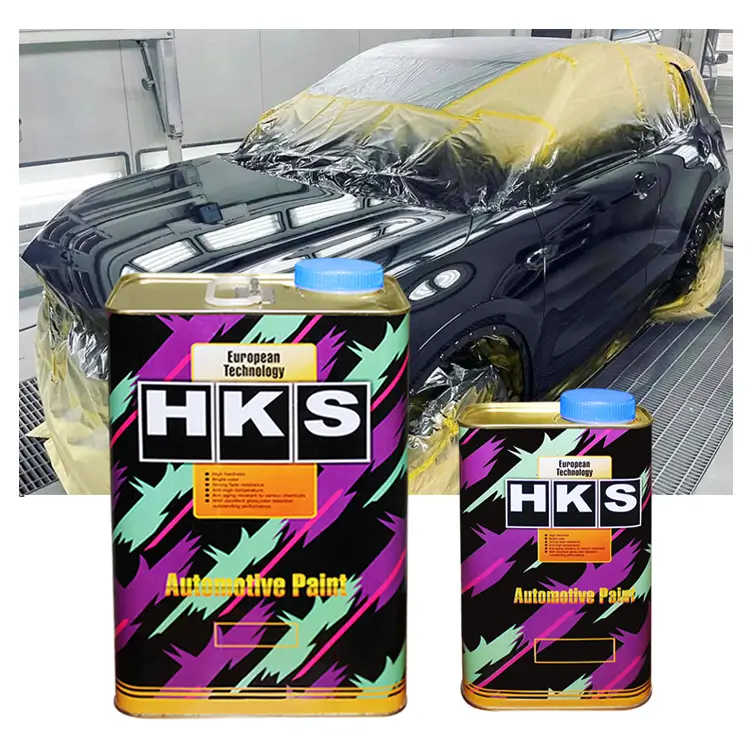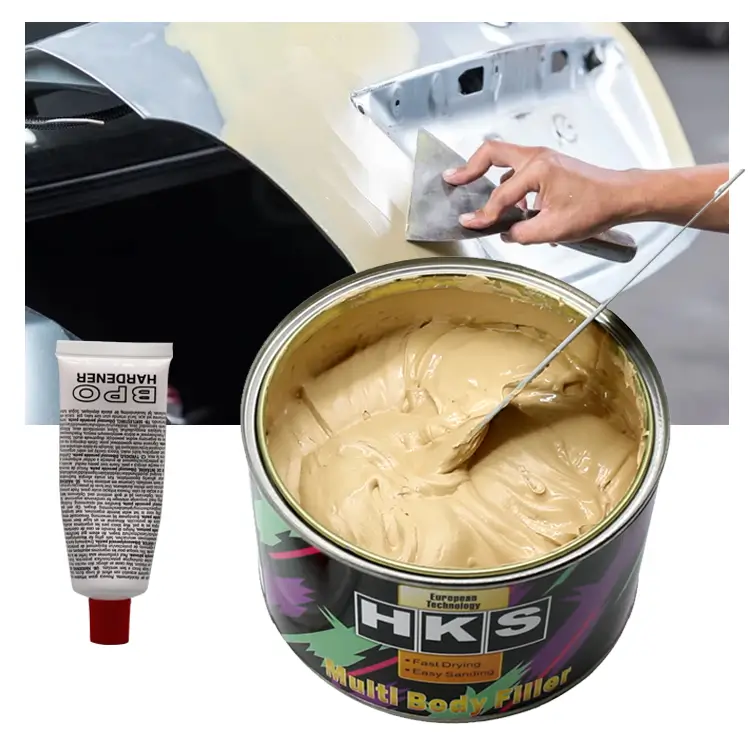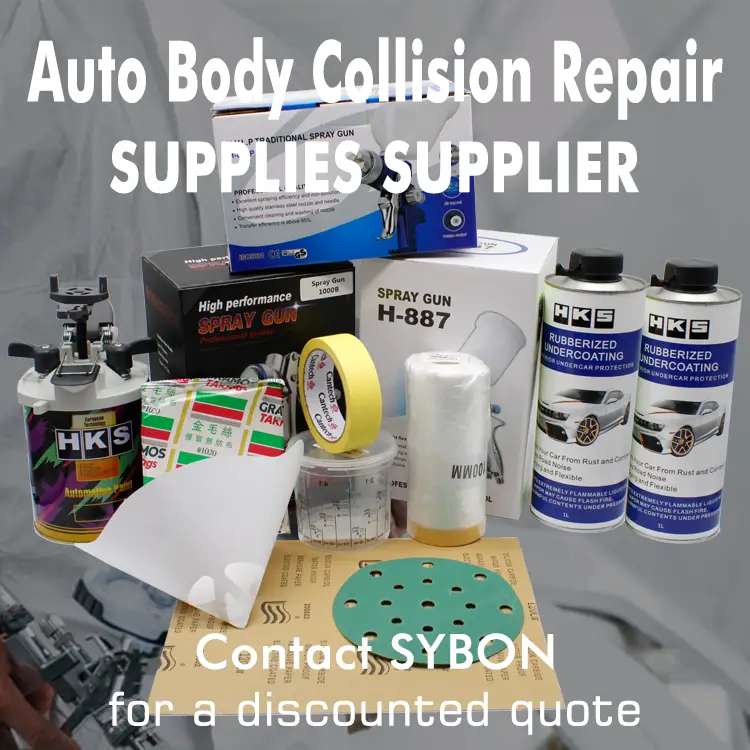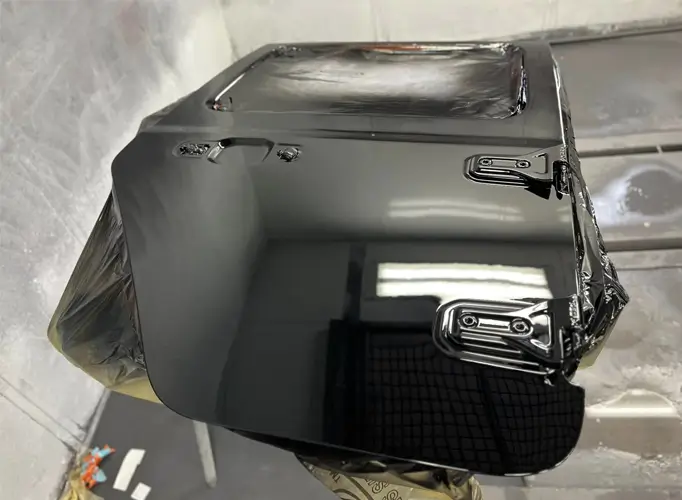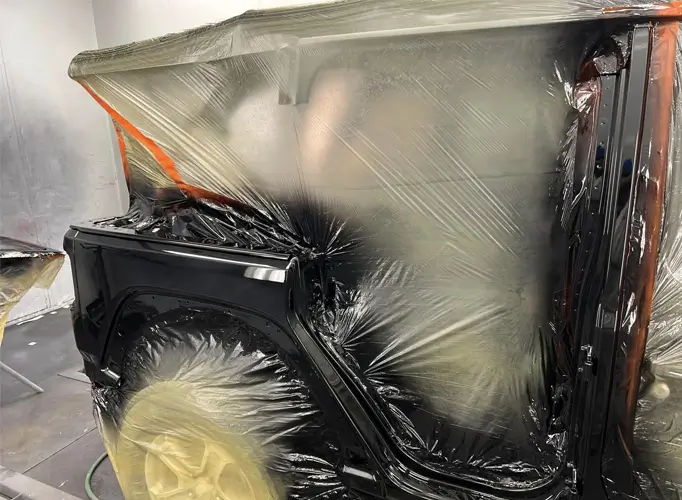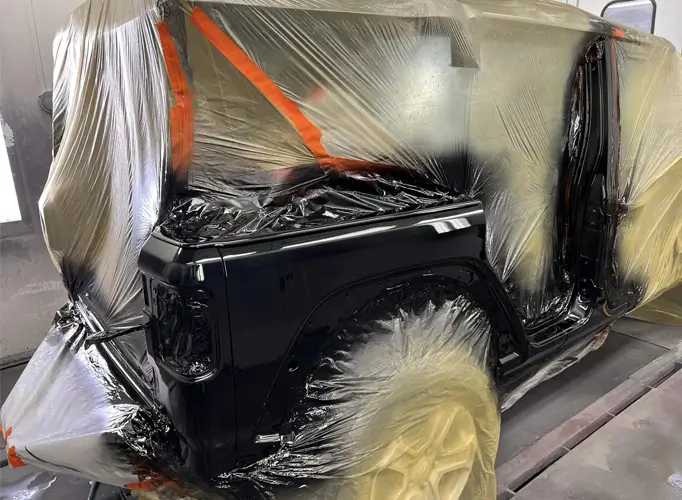
Spray Paint Car
Introduction to Spray Painting Your Car
Spray painting your car is a transformative process that can give your vehicle a fresh, vibrant look, while also protecting it from the elements. As a professional automotive paint manufacturer, SYBON is committed to providing high-quality spray paint solutions for import wholesalers, paint shops, and automotive repair centers.
Spray painting has evolved significantly over the years, with modern automotive paint technologies offering superior durability, color options, and finishes. Whether you're looking to restore a classic car or simply change the color of your daily driver, understanding the fundamentals of spray painting is essential.
One of the primary advantages of spray painting is its ability to create a seamless, factory-like finish when done correctly. It eliminates brush strokes and unevenness that can occur with traditional paint application methods. This professional appearance not only enhances your car's aesthetics but also adds to its resale value.
Moreover, spray painting provides a protective barrier against various environmental factors. UV rays, moisture, and road debris can take a toll on your car's finish over time, leading to fading, rust, and corrosion. High-quality automotive paint products offer resistance to these elements, prolonging the life of your vehicle's exterior.
As we delve into the specifics of spray painting your car in the following sections, we'll explore the benefits, types of paint, necessary tools and materials, step-by-step guidelines, and expert tips for achieving a flawless finish. We'll also address common mistakes to avoid, as well as the crucial aspect of maintaining and protecting your newly spray-painted car.
In summary, spray painting your car is more than a cosmetic makeover; it's a protective investment that can breathe new life into your vehicle. SYBON is here to guide you through the intricacies of this process, ensuring that you have access to top-tier spray paint solutions to meet your needs and achieve professional results.
Benefits of Spray Painting Your Car
Spray painting your car offers an array of advantages that extend beyond aesthetics. In this section, we will explore these benefits in detail, shedding light on why spray painting is a popular choice for car enthusiasts and professionals alike.
First and foremost, spray painting rejuvenates your car's appearance. Whether you're seeking to restore a classic car to its former glory or simply update the color of your daily driver, the transformation is striking. The even, glossy finish achieved through spray painting can make your vehicle look brand new.
While aesthetics are important, spray painting also serves as a protective shield for your car. Automotive paints have evolved to offer robust resistance to environmental elements. UV rays, which can cause paint fading and damage, are effectively blocked by modern automotive paints. Furthermore, these paints provide a barrier against moisture, preventing rust and corrosion.
Additionally, spray painting provides a broader spectrum of color options and finishes compared to traditional methods. From metallic and pearl finishes to custom colors, the possibilities are nearly limitless. This level of personalization allows you to express your unique style through your vehicle.
Another noteworthy benefit is the enhancement of resale value. A professionally spray-painted car not only attracts potential buyers but also fetches a higher price. Buyers are often willing to pay more for a car that appears well-maintained and visually appealing.
Moreover, spray painting can be a cost-effective alternative to purchasing a new car. Instead of investing in a new vehicle to get a fresh look, you can achieve a similar effect through spray painting at a fraction of the cost.
In conclusion, spray painting your car offers a multitude of benefits, including aesthetic enhancement, protection against environmental factors, personalization options, increased resale value, and cost-effectiveness. In the next sections, we will delve deeper into the technical aspects, guiding you through the process to ensure you achieve professional results.
Types of Spray Paint for Cars
Selecting the right type of spray paint is crucial when embarking on a car painting project. Understanding the different types available will help you make an informed choice that aligns with your goals and preferences. SYBON offers a range of high-quality automotive paint options to suit various needs.
Acrylic Lacquer: Acrylic lacquer is known for its glossy finish and ease of application. It dries quickly and can provide an impressive shine to your car's surface. However, it may not be as durable as other options and may require more frequent maintenance to retain its appearance.
Acrylic Enamel: Acrylic enamel paints are favored for their durability and resistance to chemicals, UV rays, and environmental factors. They provide a long-lasting finish that can withstand the rigors of daily driving. This type of paint is suitable for those seeking a balance between aesthetics and protection.
Basecoat-Clearcoat Systems: This system involves applying a basecoat, which provides color, followed by a clear coat for added protection and shine. It offers a deep, glossy finish and is commonly used in professional automotive painting. It allows for color customization and superior protection against UV damage.
Waterborne Paints: In recent years, waterborne paints have gained popularity due to their environmentally friendly properties and reduced VOC emissions. These paints offer excellent color accuracy and durability, making them a sustainable choice for car painting.
Urethane Paints: Urethane paints are known for their durability and resistance to chipping and fading. They are a popular choice for high-performance and custom vehicles, as they can withstand the demands of racing and extreme driving conditions.
Metallic and Pearl Finishes: For those seeking a unique look, metallic and pearl finishes are available in various colors. These finishes contain small metal or pearl particles that create a shimmering effect, adding depth and dimension to your car's appearance.
When choosing a spray paint type, consider factors such as your desired finish, durability requirements, and environmental considerations. It's essential to follow the manufacturer's recommendations for each type of paint, including surface preparation and application techniques, to achieve the best results.
SYBON's range of automotive paints is designed to meet the diverse needs of our customers, ensuring that you have access to top-quality products for your car painting projects.
Tools and Materials Needed for Spray Painting
To achieve a professional finish when spray painting your car, it's essential to have the right tools and materials at your disposal. In this section, we will outline the key items you'll need to ensure a successful and efficient painting process.
Spray Gun: Invest in a high-quality spray gun designed for automotive painting. The type of gun you choose will depend on your project's scale and complexity. HVLP (High Volume Low Pressure) guns are commonly used for their efficiency and precise paint atomization.
Air Compressor: A reliable air compressor is essential to power your spray gun. Ensure it delivers a consistent and adequate air pressure to achieve the desired spray pattern.
Sandpaper: Various grits of sandpaper (from coarse to fine) will be needed for surface preparation. Sanding removes imperfections, smooths the surface, and promotes paint adhesion.
Primer: Automotive primer is applied to create a smooth and uniform surface for paint adhesion. It also helps prevent rust and corrosion.
Paint: Choose the appropriate automotive paint for your project, considering factors like color, type (lacquer, enamel, basecoat, etc.), and quantity. Ensure you have enough paint to complete the job without interruptions.
Clear Coat: Clear coat is essential for protecting the paint and providing a glossy finish. It adds depth and durability to the final result.
Masking Tape and Paper: Use automotive masking tape and paper to protect areas you don't want to paint, such as windows, trim, and rubber seals.
Respirator and Safety Gear: Prioritize safety by wearing a respirator to protect against paint fumes and dust. Additionally, wear safety glasses, gloves, and suitable protective clothing.
Paint Mixing Equipment: If you're customizing colors, you'll need paint mixing equipment to achieve the desired hue accurately.
Paint Booth or Controlled Environment: A clean, well-ventilated area or a designated paint booth is crucial for achieving a dust-free finish.
Cleaning Supplies: Have cleaning materials on hand to ensure surfaces are free of contaminants before painting.
Tack Cloth: Tack cloths are used to remove dust and debris from the surface before painting, ensuring a smooth finish.
Paint Strainers: Strain the paint to remove any impurities or debris that could affect the finish.
Measuring and Mixing Tools: Accurate measurement and mixing of paint and primer are essential for consistent results.
By having these tools and materials ready, you'll be well-prepared to embark on your spray painting project. In the next sections, we'll guide you through the step-by-step process of preparing your car and achieving a professional finish.
Preparing Your Car for Spray Painting
Properly preparing your car before spray painting is a critical step in achieving a professional finish. In this section, we will delve into the essential steps and techniques to ensure your vehicle's surface is ready for the application of paint.
1.Cleaning the Surface: Start by thoroughly cleaning the car's exterior to remove dirt, grease, wax, and any other contaminants. Use a mild detergent and water, followed by a degreaser if needed. Pay close attention to areas around trim, door handles, and seams.
2.Removing Old Paint: If you're repainting your car, it's essential to remove any old, flaking paint. This can be done by sanding or using a paint stripper. Ensure that the surface is smooth and free from peeling paint.
3.Sanding: Sand the entire surface of the car using the appropriate grit sandpaper. Start with a coarser grit to remove imperfections and gradually move to finer grits for a smoother finish. Sanding promotes paint adhesion and helps create an even canvas.
4.Repairing Imperfections: Address any dents, scratches, or rust spots before proceeding. Fill in dents and scratches with body filler, and use rust converters or sand away rusted areas. Sand the repaired spots for a seamless finish.
5.Masking Off Areas: Use automotive masking tape and paper to protect areas you don't want to paint, such as windows, trim, and rubber seals. Ensure that the masking is precise to avoid overspray.
6.Priming: Apply automotive primer to the entire surface. Primer helps create a uniform base for paint adhesion and prevents rust and corrosion. Follow the manufacturer's instructions for the proper application and drying time.
7.Final Cleaning: Before applying paint, use a tack cloth to remove any remaining dust and debris from the surface. A clean surface is crucial for achieving a smooth finish.
8.Preparation for Paint Booth: If you're working in a paint booth or controlled environment, ensure that it is clean and free from dust and contaminants. Proper ventilation is also crucial to maintain air quality.
By meticulously following these preparation steps, you'll set the foundation for a successful spray painting project. Proper surface preparation is the key to achieving a flawless and long-lasting finish. In the next section, we'll provide a step-by-step guide to the actual spray painting process.
Step-by-Step Guide to Spray Painting Your Car
Achieving a professional finish when spray painting your car requires careful attention to detail and following a step-by-step process. In this section, we will provide you with a comprehensive guide to the actual spray painting process.
Step 1: Masking and Taping
Before you begin painting, ensure that all areas you don't want to paint are properly masked off using automotive masking tape and paper. Pay close attention to windows, trim, and any delicate or non-paintable components.
Step 2: Mixing the Paint
Carefully mix your chosen automotive paint according to the manufacturer's instructions. Accurate mixing is essential to achieve the desired color and consistency.
Step 3: Setting Up the Spray Gun
Attach your spray gun to the air compressor and adjust the air pressure to the recommended level. Ensure that the spray gun nozzle and air cap are clean and free from any debris.
Step 4: Applying the Primer
Start by applying a smooth, even coat of automotive primer to the entire surface of the car. Apply multiple thin coats rather than one thick coat to prevent runs and achieve optimal adhesion. Allow the primer to dry as per the manufacturer's instructions.
Step 5: Applying the Basecoat
Once the primer is dry, it's time to apply the basecoat. Begin with light, overlapping passes, holding the spray gun at a consistent distance from the surface. Apply multiple coats until you achieve the desired color depth and coverage. Allow each coat to flash (partially dry) before applying the next.
Step 6: Applying the Clear Coat
After the basecoat has dried, it's time to apply the clear coat. This step provides a glossy finish and added protection. Apply the clear coat using the same technique as the basecoat, ensuring even coverage. Follow the manufacturer's recommended drying times between coats.
Step 7: Wet Sanding and Buffing (Optional)
For an exceptionally smooth finish, some may choose to wet sand and buff the clear coat after it has fully cured. This process involves using progressively finer grit sandpaper followed by polishing compounds to achieve a high-gloss finish.
Step 8: Removing Masking
Carefully remove all masking tape and paper to reveal your freshly painted car. Ensure that there is no residue left behind on the painted surfaces.
Step 9: Final Inspection
Inspect the painted surface carefully for any imperfections, runs, or dust particles. If necessary, address these issues promptly by sanding and repainting affected areas.
Step 10: Curing and Final Finish
Allow the paint to cure fully according to the manufacturer's recommendations. This may take several days or even weeks, depending on the type of paint used. After curing, you can apply wax or paint protection products to enhance the shine and durability of the finish.
Remember that achieving a professional finish takes practice and patience. Proper spraying technique, including maintaining a consistent distance and speed, is crucial to prevent issues like runs and sags. Additionally, working in a clean and controlled environment helps minimize dust and contaminants.
By following this step-by-step guide, you can successfully spray paint your car and achieve a stunning, professional-quality finish.
Tips for Achieving a Professional Finish
To attain a truly professional finish when spray painting your car, it's essential to employ best practices and techniques. In this section, we will provide you with valuable tips that can make a significant difference in the quality of your paint job.
·Practice Proper Spray Technique: Maintain a consistent distance from the car's surface and overlap each pass by approximately 50%. Keep the spray gun perpendicular to the surface to ensure even coverage and prevent streaks or unevenness.
·Use Quality Paint: Invest in high-quality automotive paint products from reputable manufacturers like SYBON. Quality paint not only provides better color accuracy but also enhances durability and resistance to environmental factors.
·Control the Environment: Whenever possible, work in a controlled environment like a paint booth to minimize dust and contaminants. Proper ventilation is crucial to ensure good air quality and safety.
·Observe Ideal Conditions: Aim to paint on days with mild temperatures and low humidity. Avoid painting in direct sunlight or extreme heat, as it can affect the drying and curing process.
·Thin Coats Are Better: Apply multiple thin coats of paint rather than one thick coat. This approach reduces the risk of runs and allows for better adhesion and a smoother finish.
·Practice Patience: Allow each coat of paint to flash (partially dry) before applying the next. Rushing the process can lead to imperfections and uneven coverage.
·Check for Contaminants: Before painting, inspect the surface for any remaining contaminants, such as dust or lint. Use a tack cloth to remove these particles.
·Maintain Clean Equipment: Keep your spray gun, air compressor, and paint mixing equipment clean and well-maintained. Clean the gun nozzle and air cap regularly to prevent clogs.
·Test Spray: Before starting the actual paint job, perform a test spray on a scrap surface to ensure that the spray gun is working correctly and that the paint is flowing smoothly.
·Blend Edges Carefully: When painting panels individually, take care to blend the paint at the edges to create a seamless transition between panels and prevent color mismatches.
·Consider a Clear Bra: To protect your car's newly painted surface from chips and scratches, consider applying a clear bra or paint protection film to high-impact areas.
·Follow Manufacturer's Recommendations: Always follow the manufacturer's instructions for each product you use, from paint mixing ratios to drying times and curing procedures.
·Seek Professional Advice: If you're new to spray painting or have questions about a specific aspect of the process, don't hesitate to consult with professionals or seek guidance from experts.
·Maintain a Clean Work Area: Keep your work area organized and free from clutter to minimize the risk of accidents and contamination.
By implementing these tips and techniques, you can elevate your spray painting skills and achieve results that rival professional paint jobs. Remember that practice is key, and with each project, your proficiency and confidence will grow.
Common Mistakes to Avoid When Spray Painting Your Car
While spray painting your car can yield impressive results when done correctly, it's crucial to be aware of common mistakes that can compromise the quality of your paint job. In this section, we'll highlight these pitfalls and provide guidance on how to avoid them.
1.Inadequate Surface Preparation: Failing to thoroughly clean, sand, and prime the surface can result in poor paint adhesion and imperfections. Ensure the surface is smooth and free from contaminants before applying paint.
2.Ignoring Safety Precautions: Neglecting to wear the necessary safety gear, such as a respirator, safety glasses, and protective clothing, can put your health at risk due to exposure to fumes and paint particles.
3.Rushing the Process: Impatience can lead to issues like runs and sags. Allow each coat to dry properly before applying the next, and don't rush through the steps of preparation.
4.Incorrect Paint Mixing: Inaccurate paint mixing ratios can result in color discrepancies and finish irregularities. Always follow the manufacturer's recommendations for mixing paint and additives.
5.Uneven Spray Technique: Inconsistent spraying distance, speed, or overlapping can lead to uneven coverage and streaks. Practice a steady and even spray technique.
6.Failure to Mask Properly: Inadequate masking can result in overspray on areas you don't want to paint. Take your time to mask off surfaces carefully and precisely.
7.Not Using Quality Paint: Low-quality or incompatible paint products may not adhere well, leading to peeling or chipping. Invest in reputable automotive paint from trusted manufacturers.
8.Painting in Unsuitable Conditions: Extreme temperatures, high humidity, or windy conditions can negatively impact your paint job. Choose favorable weather and work in a controlled environment when possible.
9.Overloading Paint: Applying too much paint at once can result in runs and a rippled texture. Apply thin, even coats, and allow each coat to dry before adding more.
10.Ignoring Contaminants: Failing to remove dust or debris from the surface before painting can lead to imperfections in the finish. Use a tack cloth to ensure a clean surface.
11.Not Blending Colors: When repainting specific panels, it's essential to blend the color at the edges to create a seamless transition and avoid noticeable color differences.
12.Skimping on Clear Coat: The clear coat provides protection and gloss. Applying too little clear coat can result in a dull finish. Follow the recommended number of clear coats for a glossy appearance.
13.Inadequate Curing Time: Rushing to use or handle the freshly painted car before the paint has fully cured can lead to damage and imperfections. Be patient and allow for proper curing.
14.Inconsistent Pressure: Fluctuations in air pressure can result in uneven paint application. Ensure that your air compressor maintains a steady pressure throughout the process.
By being aware of these common mistakes and taking precautions to avoid them, you can significantly improve the quality and durability of your spray-painted finish. Learning from your experiences and seeking guidance when needed will help you become a proficient car painter.
Maintaining and Protecting Your Spray-Painted Car
Once you've successfully completed your spray painting project, it's essential to understand how to maintain and protect your newly painted car to ensure that the finish remains vibrant and durable over time. In this section, we will provide guidance on caring for your spray-painted vehicle.
·Regular Washing: Regularly wash your car with a mild automotive detergent and clean water. Avoid abrasive brushes or sponges that could scratch the paint. Use a microfiber cloth or mitt for gentle cleaning.
·Waxing: Apply a high-quality automotive wax or sealant to the painted surfaces to provide an additional layer of protection. Waxing enhances the shine and helps repel water and contaminants.
·Avoid Harsh Chemicals: Avoid using harsh chemicals or abrasive cleaners on your car's painted surfaces. These can damage the paint and clear coat. Stick to automotive-specific cleaning products.
·Remove Contaminants Promptly: Address contaminants like bird droppings, tree sap, or insect splatters promptly. They can damage the paint if left for an extended period.
·Avoid Parking in Direct Sunlight: Prolonged exposure to direct sunlight can lead to paint fading and damage. Whenever possible, park your car in the shade or use a car cover.
·Protect Against Scratches: Be cautious when parking near other vehicles or in tight spaces to avoid scratches or dents. Consider applying clear bras or paint protection film to vulnerable areas.
·Regular Inspection: Periodically inspect your car's painted surfaces for chips, scratches, or imperfections. Promptly address any issues to prevent rust from forming.
·Avoid Automatic Car Washes: While convenient, automatic car washes can use abrasive brushes and harsh chemicals that may harm the paint. Hand washing or touchless car washes are preferable.
·Address Rust Promptly: If you notice any rust spots, address them immediately. Rust can spread and compromise the integrity of the paint and metal.
·Professional Detailing: Consider professional detailing services to keep your car looking its best. Detailers can remove minor imperfections and enhance the shine of the paint.
·Protection Against Environmental Factors: Use paint protection products that offer UV resistance to shield your car from the sun's harmful rays and environmental contaminants.
·Touch-Up Paint: Keep a small amount of touch-up paint on hand for minor repairs. Touch-up paint can help prevent small chips from turning into larger issues.
·Maintain Painted Wheels: If your car has painted wheels, clean and maintain them regularly to prevent brake dust and road debris from affecting the finish.
By following these maintenance and protection guidelines, you can ensure that your spray-painted car retains its stunning appearance and remains protected against the elements. Proper care and attention will extend the life and vibrancy of your vehicle's finish.
Conclusion and Final Thoughts
In conclusion, spray painting your car can be a rewarding endeavor that transforms the appearance of your vehicle while providing protection against the elements. As a professional automotive paint manufacturer, SYBON is committed to helping import wholesalers, paint shops, and automotive repair centers achieve outstanding results in their car painting projects.
Throughout this comprehensive guide, we've explored the various aspects of spray painting, from the benefits and types of paint to the tools and materials needed, surface preparation, step-by-step guidelines, expert tips, common mistakes to avoid, and maintenance and protection measures.
Spray painting your car offers numerous advantages, including the rejuvenation of your car's appearance, protection against environmental factors, personalization options, increased resale value, and cost-effectiveness. The key to success lies in meticulous preparation, proper technique, and ongoing care.
Whether you're a professional looking to provide top-tier services to your customers or an enthusiast eager to tackle a DIY project, understanding the intricacies of spray painting is essential. SYBON is here to support your endeavors with high-quality automotive paint products designed to meet your specific needs.
As you embark on your spray painting journey, remember that practice and patience are key to achieving professional results. Continue to refine your skills and seek guidance when needed. With the right knowledge and commitment, you can transform your car into a work of art that turns heads and stands the test of time.
Thank you for choosing SYBON as your trusted partner in the world of automotive paint. We look forward to assisting you in your future car painting projects, ensuring that you have access to the finest products and expertise to achieve outstanding results.

Source of this article:https://www.supersybon.com
Get to know us through more channels:

